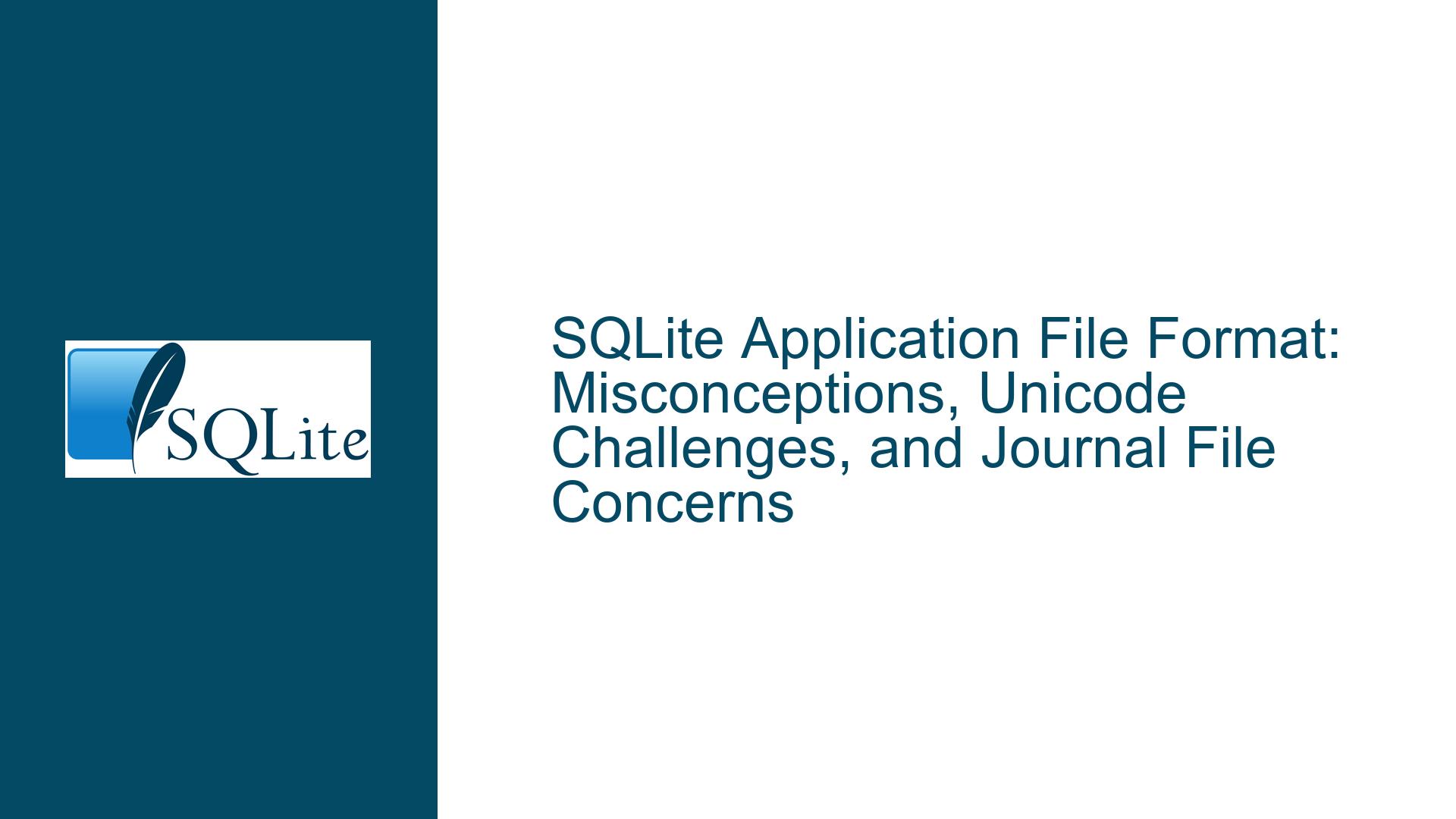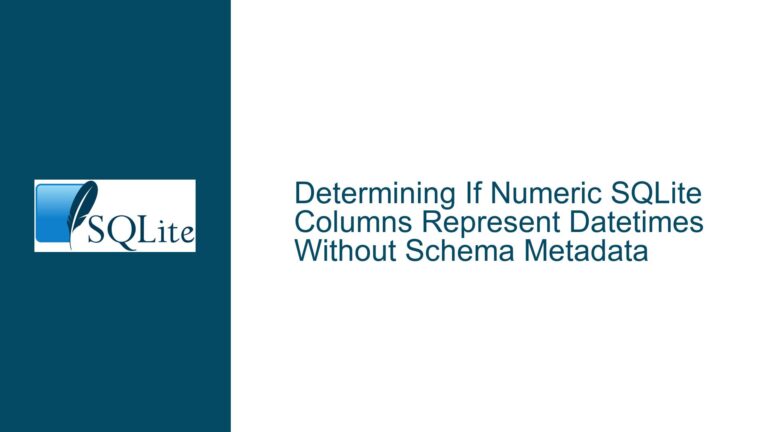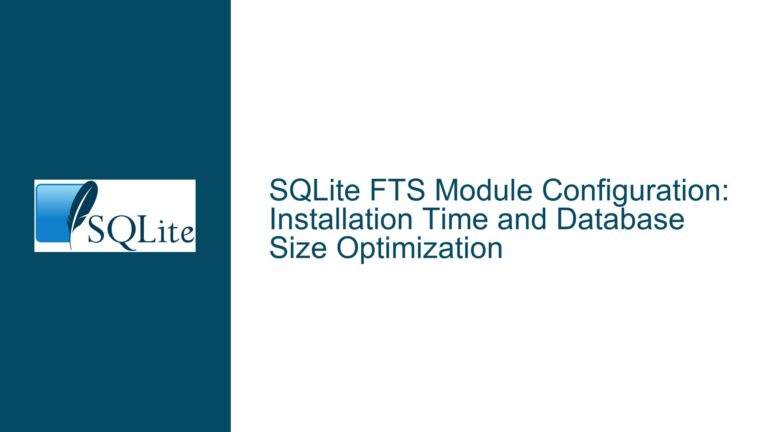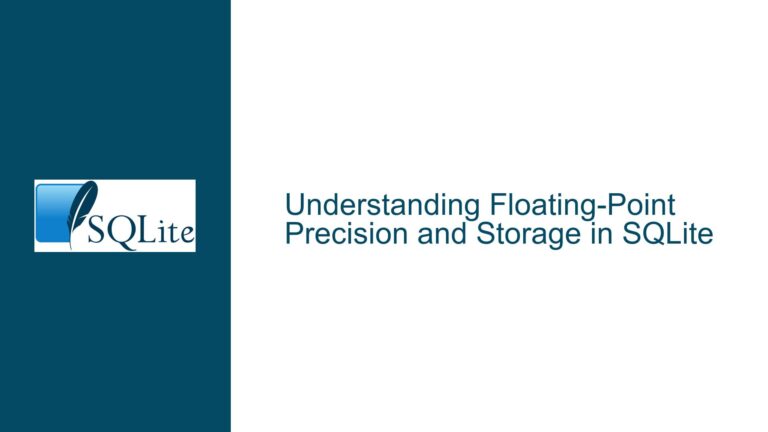SQLite Application File Format: Misconceptions, Unicode Challenges, and Journal File Concerns
Misunderstanding Microsoft Office File Formats and Their Relevance to SQLite
The discussion highlights a significant misunderstanding regarding Microsoft Office file formats and their classification as "fully custom" formats. While the SQLite documentation suggests that Microsoft Office formats are not wrapped piles of files, this is only partially accurate. The older Microsoft Office formats, such as .doc, .ppt, and .xls, use the Microsoft Compound File Binary Format (CFBF), which is a proprietary container format. This format is not based on ZIP, unlike the newer Office Open XML (OOXML) formats (e.g., .docx, .pptx, .xlsx), which are ZIP archives containing XML files and other resources.
The confusion arises from the fact that the SQLite documentation does not clearly distinguish between the older CFBF-based formats and the newer ZIP-based OOXML formats. This distinction is crucial because it affects how developers perceive SQLite as an application file format. SQLite, like OOXML, can be considered a "wrapped pile of files" in the sense that it encapsulates data in a single file, but it does so using a structured database format rather than a file archive format.
The relevance of this distinction to SQLite lies in its application as a file format for software applications. SQLite’s ability to store structured data in a single file makes it an attractive alternative to both CFBF and OOXML formats. However, the discussion reveals that some developers may be misled by the documentation’s oversimplification of file format classifications, leading to potential misunderstandings about SQLite’s capabilities and limitations.
Challenges with Unicode and Alternative Character Encodings in SQLite
Another critical issue raised in the discussion is SQLite’s handling of Unicode and other character encodings. SQLite assumes UTF-8 or UTF-16 encoding for text data, which can be problematic for applications that require support for alternative character sets, such as TRON, PC encoding, or UTF-32. While SQLite allows the storage of binary data (BLOBs), its built-in text functions and collation sequences are designed with Unicode in mind. This creates challenges for developers who need to work with non-Unicode text data.
For example, custom collation sequences cannot be applied to BLOBs, which limits their usefulness for non-Unicode text. Additionally, SQLite’s text functions, such as LIKE and GLOB, assume Unicode input, which can lead to incorrect results when working with other encodings. The discussion suggests that developers may resort to "false encoding," where non-Unicode text is treated as ISO-8859-1 and converted to UTF-8, with null characters replaced by Unicode code point 256. While this approach can work in some cases, it is messy and error-prone.
The broader implication of this issue is that SQLite’s Unicode-centric design may not be suitable for all applications, particularly those that require support for legacy or niche character encodings. This limitation is especially relevant for developers working in specialized domains, such as internationalization, localization, or legacy system integration, where alternative character sets are still in use.
Concerns with Journal Files and Database File Management in SQLite
The discussion also raises concerns about SQLite’s use of separate journal files, particularly in Write-Ahead Logging (WAL) mode. Journal files are used to ensure atomicity and durability in database transactions, but they can complicate file management, especially when copying or backing up SQLite databases. If a database is copied while a transaction is in progress, the journal files may not be copied correctly, leading to potential data corruption or loss.
One proposed solution is to store transaction data within the main database file itself, using free pages to hold changes until a transaction is committed. This approach would eliminate the need for separate journal files and simplify database file management. However, it would also increase the size of the database file, as free pages would need to be reserved for transaction data. Additionally, this approach would require significant changes to SQLite’s internal architecture, making it impractical for most use cases.
The discussion highlights a trade-off between simplicity and robustness in SQLite’s file management design. While separate journal files provide robust transaction support, they also introduce complexity and potential pitfalls for developers. This issue is particularly relevant for applications that require frequent database copying or backup, such as mobile apps or embedded systems.
Troubleshooting Steps, Solutions, and Fixes for SQLite Application File Format Issues
To address the issues raised in the discussion, developers can take several steps to ensure that SQLite is used effectively as an application file format. First, it is essential to understand the differences between various file formats, including CFBF, OOXML, and SQLite. Developers should carefully evaluate their application’s requirements and choose the most appropriate format based on factors such as data structure, performance, and compatibility.
For applications that require support for non-Unicode character encodings, developers can explore workarounds such as storing text data as BLOBs and implementing custom text processing logic. While this approach is not ideal, it can provide a viable solution for niche use cases. Alternatively, developers can consider using external libraries or tools to handle non-Unicode text data before storing it in SQLite.
To mitigate the risks associated with journal files, developers can avoid using WAL mode unless absolutely necessary. In most cases, the default rollback journal mode provides sufficient transaction support without the added complexity of separate journal files. Additionally, developers should implement robust file management practices, such as ensuring that databases are not copied or backed up while transactions are in progress.
Finally, developers should stay informed about SQLite’s ongoing development and updates. The SQLite team regularly addresses issues and introduces new features that can improve the database’s suitability as an application file format. By staying up-to-date with these developments, developers can make informed decisions and avoid potential pitfalls.
In conclusion, while SQLite offers many advantages as an application file format, it is not without its challenges. By understanding the nuances of file formats, addressing Unicode limitations, and managing journal files effectively, developers can leverage SQLite’s strengths and build robust, high-performance applications.






